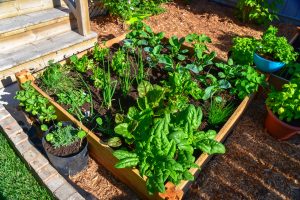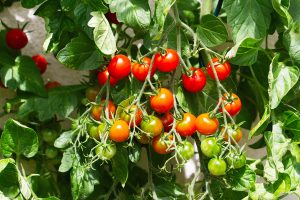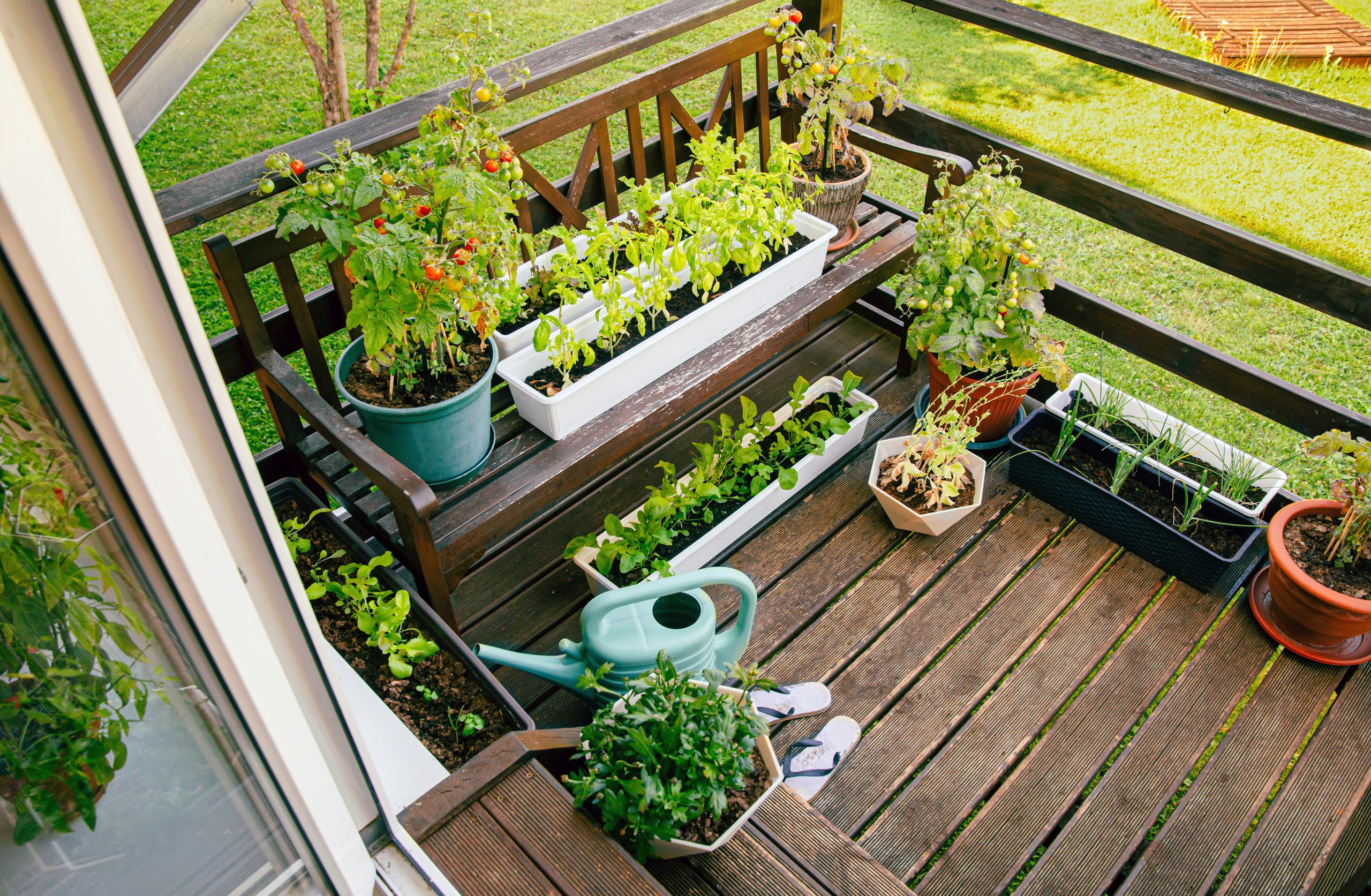Container Vegetable Garden: A Step-by-Step Guide for Small Spaces
Are you a novice gardener with a small outdoor space like a balcony or patio? Are you interested in growing your own vegetables but don’t know where to start? Look no further! In this step-by-step guide from Genesis Gardens, we’ll walk you through the process of creating a small space or container vegetable garden that is environmentally friendly and free from harmful pesticides. With a little planning, patience, and the right vegetables, you’ll soon be enjoying the fruits (and vegetables!) of your labour.
Step 1: Assess Your Space
Begin by evaluating your available space. Whether you have a balcony, patio, or a small patch of soil, you can still create a thriving vegetable garden. Consider the amount of sunlight your space receives and the available water source. Most vegetables grow best with at least six hours of direct sunlight, so choose a location that provides adequate light.
Step 2: Plan Your Garden Layout
 Next, plan your garden layout. Measure the available space and decide how you want to utilise it. If you have a balcony or patio, container gardening is the way to go. Select containers that are at least 30cm (12”) deep and have proper drainage. You can add broken pots, pebbles or even polystyrene packaging materials to create drainage. Raised beds are another option, especially for a small garden or patio. Before you start, it’s a good idea to determine the number of containers or the size of the raised bed based on the vegetables you want to grow.
Next, plan your garden layout. Measure the available space and decide how you want to utilise it. If you have a balcony or patio, container gardening is the way to go. Select containers that are at least 30cm (12”) deep and have proper drainage. You can add broken pots, pebbles or even polystyrene packaging materials to create drainage. Raised beds are another option, especially for a small garden or patio. Before you start, it’s a good idea to determine the number of containers or the size of the raised bed based on the vegetables you want to grow.
Step 3: Prepare the Soil
Whether you’re using containers or a raised bed, it’s essential to prepare the soil properly. If using compost, make sure to opt for a peat-free variety. Organic compost is a great option too, but it’s important to choose soil or compost which is suitable for what you plan to grow. Countryfile has a useful article with more details. We always avoid using synthetic fertilisers or pesticides that can harm the environment – there are plenty of alternatives around which are kind to nature.
Step 4: Choose the Right Vegetables
 Now comes the exciting part – selecting the vegetables to grow in your garden. As a novice gardener, it’s best to start with easy-to-grow and versatile vegetables. Here are some great options for UK gardeners:
Now comes the exciting part – selecting the vegetables to grow in your garden. As a novice gardener, it’s best to start with easy-to-grow and versatile vegetables. Here are some great options for UK gardeners:
- Salad Greens: Lettuce, spinach, and rocket are quick-growing and perfect for small spaces. Loose leaf and salad mix varieties are brilliant as they crop over several weeks and are known as ‘cut and come again’.
- Radishes: These peppery root vegetables mature rapidly and add a delightful crunch to salads.
- Tomatoes: Cherry tomatoes are well-suited for containers and provide a bountiful harvest. For space efficiency, try growing trailing varieties in hanging baskets.
- Herbs: Basil, parsley, chives and mint can be grown easily in containers and add flavour to your dishes.
- Peppers: Compact pepper plants thrive in containers, producing vibrant fruits.
- Beans: Runner beans and French beans both grow well in containers and grow vertically.
- Carrots: Choose short or Chantenay varieties suitable for container gardening and enjoy the homegrown sweetness.
Step 5: Planting and Caring for Your Vegetables
Follow the soil preparation and seed planting instructions on the seed packets or young plant labels for each vegetable. Generally, sow seeds at the recommended depth and spacing. You may need to thin out the seedlings after a while to enable good growth. Consider using organic mulch, such as straw or shredded leaves, to retain moisture and suppress weeds.
Step 6: Watering and Feeding
Water your vegetable plants consistently, especially during dry spells. Aim to keep the soil evenly moist, but be cautious not to overwater. Container gardens may require more frequent watering than in-ground gardens – daily in warmer weather. To nourish your plants, use organic fertilisers during the growing season to provide essential nutrients.
Step 7: Pest Control
An environmentally friendly garden means avoiding harmful pesticides. Instead, we recommend a proactive approach. Inspect your plants regularly for signs of pests or diseases. Handpick larger insects off the plants, and use natural remedies like neem oil or insecticidal soap for small infestations. Encourage beneficial insects like ladybirds and lacewings to visit your garden by planting flowers that attract them, such as marigolds and daisies. These insects actually feed on the aphids which love to damage your plants! Additionally, companion planting can help repel pests. For example, planting garlic and onions near susceptible vegetables like carrots can help keep the critters away.
Step 8: Regular Maintenance
To ensure a healthy and productive vegetable garden, regular maintenance is necessary. Keep an eye on weed growth and remove them promptly to prevent competition for resources. Regularly monitor for signs of disease or nutrient deficiencies and take appropriate measures to address them. Thin out seedlings and prune plants as needed to promote airflow and prevent overcrowding.
Step 9: Harvesting
One of the most rewarding moments in vegetable gardening is harvesting your homegrown produce. Each vegetable has its own harvest time, so be sure to check the specific guidelines. Harvesting at the peak of ripeness ensures the best flavour and nutritional value. Use sharp garden shears or scissors to harvest leafy greens, while gently twisting or cutting vine crops like tomatoes and peppers.
Step 10: Enjoy Your Bounty
Finally, savour the fruits of your labour by incorporating your homegrown vegetables into delicious meals. From fresh salads to roasted vegetables, there are countless ways to enjoy the flavours and nutrients of your garden. Share the joy with family and friends, inspiring them to embrace the wonders of vegetable gardening too.
Get growing!
Creating a vegetable garden, even with limited space, is an enriching experience that allows you to connect with nature, reduce your carbon footprint, and enjoy fresh, pesticide-free produce. By following this step-by-step guide, you can embark on your gardening journey with confidence. Remember, start small, choose the right vegetables, provide proper care, and harvest your bounty with joy. Happy gardening!

